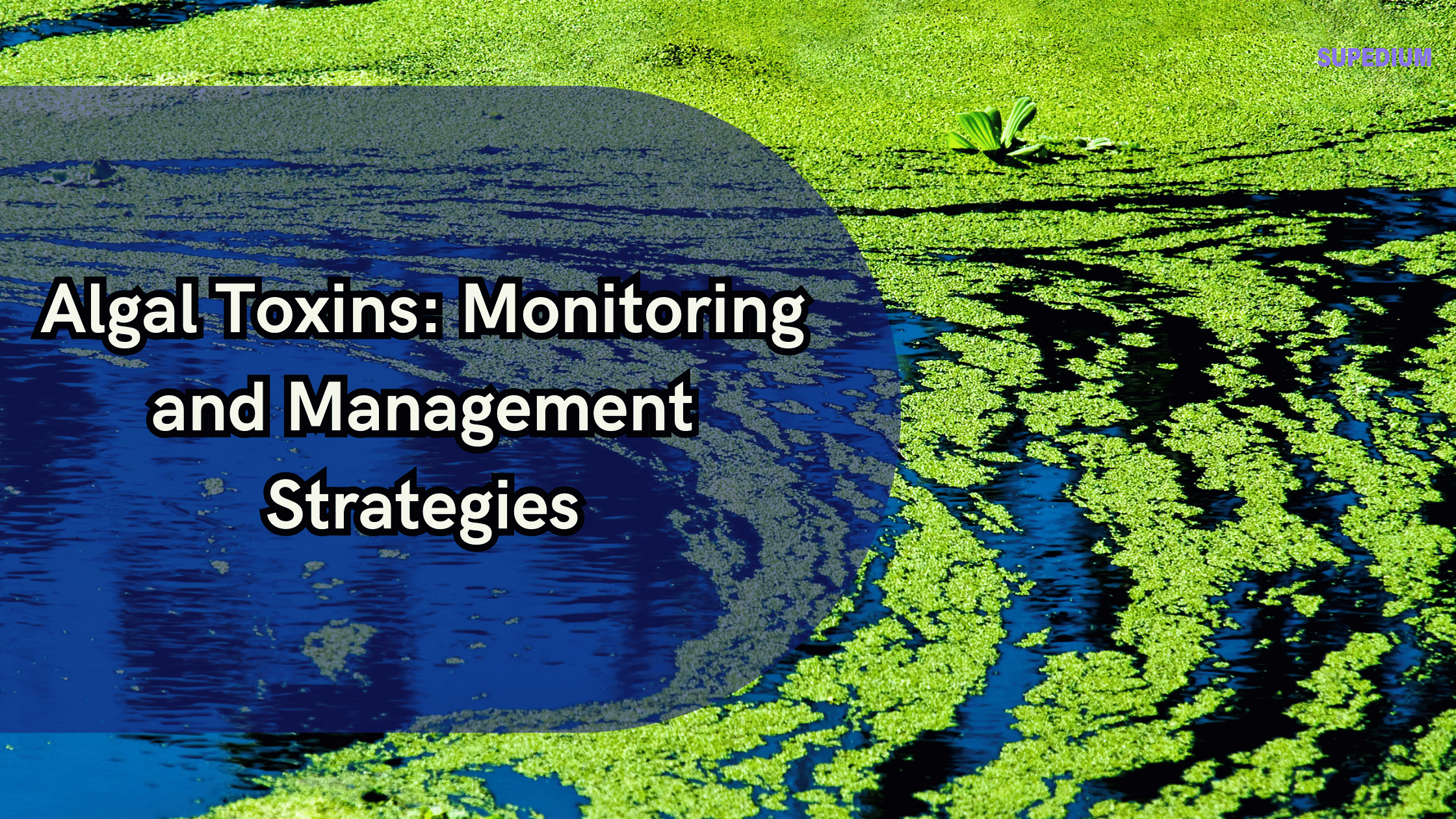Table of Contents
![]()
I. Introduction
Algal toxins are harmful substances produced by certain species of algae, which can have severe impacts on both human health and aquatic ecosystems. These toxins are a significant concern due to their potential to contaminate water supplies and food sources, leading to health issues and economic losses. Effective monitoring and management strategies are crucial to mitigate these impacts and ensure safe water and food resources.
II. Types of Algal Toxins
A. Microcystins
Microcystins are produced primarily by cyanobacteria, such as Microcystis aeruginosa. These toxins are notorious for causing liver damage and have been linked to various health problems, including liver cancer. Microcystins are persistent in water bodies and can accumulate in aquatic organisms, making them a critical concern for both environmental and public health.
B. Saxitoxins
Saxitoxins are produced by dinoflagellates, such as Alexandrium species. These toxins are known for causing paralytic shellfish poisoning (PSP), which can lead to neurological symptoms and, in severe cases, respiratory failure. Saxitoxins accumulate in shellfish and can be dangerous if consumed by humans, leading to significant public health risks.
C. Domoic Acid
Domoic acid is produced by diatoms, such as Pseudo-nitzschia species. This toxin causes amnesic shellfish poisoning (ASP), which can result in memory loss, gastrointestinal issues, and neurological damage. Domoic acid is a concern for shellfish consumers and can also impact marine mammals that feed on contaminated prey.
D. Other Notable Toxins
- Anatoxins: Produced by some cyanobacteria, anatoxins can affect the nervous system, leading to rapid and potentially fatal outcomes in both animals and humans.
- Cylindrospermopsin: Another toxin from cyanobacteria, cylindrospermopsin can cause liver and kidney damage, posing risks to both aquatic life and humans.
III. Monitoring Algal Toxins
A. Sampling and Detection Techniques
Effective monitoring of algal toxins begins with proper sampling and detection techniques. Water samples are collected from potentially affected areas and analyzed using various methods:
- High-Performance Liquid Chromatography (HPLC): This technique separates and quantifies toxins based on their chemical properties.
- Enzyme-Linked Immunosorbent Assay (ELISA): ELISA uses antibodies to detect specific toxins, providing a sensitive and specific method for identifying algal toxins.
- Polymerase Chain Reaction (PCR): PCR detects genetic material from toxin-producing algae, allowing for early detection and identification of harmful algal blooms.
B. Monitoring Programs and Protocols
Several regional and national monitoring programs are in place to track algal toxins. Government agencies and research institutions play a key role in these programs, implementing standardized protocols to ensure accurate and reliable data. These programs often include regular water sampling, toxin analysis, and reporting of results to inform public health and safety measures.
C. Challenges in Monitoring
Monitoring algal toxins poses several challenges:
- Variability in Toxin Concentrations: Toxin levels can fluctuate rapidly, making it difficult to provide consistent and timely information.
- Detection Limits and Sensitivity: Some detection methods may not be sensitive enough to identify low concentrations of toxins, which can lead to undetected risks.
- Cost and Resource Limitations: Comprehensive monitoring requires significant financial and human resources, which can be a constraint for many regions.
IV. Management Strategies
A. Prevention
Preventing the occurrence of algal toxins involves addressing their primary causes:
- Reducing Nutrient Inputs: Algal blooms are often fueled by excess nutrients, particularly nitrogen and phosphorus. Effective nutrient management practices in agriculture, such as reducing fertilizer use and improving wastewater treatment, can help prevent blooms.
- Public Education and Awareness: Educating the public about the risks associated with algal toxins and promoting safe practices can help reduce exposure and improve overall water quality.
B. Response
- Early Warning Systems: Implementing early warning systems can provide timely alerts about potential algal blooms, allowing for proactive measures to protect public health.
- Emergency Response Plans: Developing and maintaining emergency response plans ensures that appropriate actions can be taken quickly in the event of a toxin-related incident.
C. Remediation and Mitigation
- Algal Bloom Control Methods: Various methods can be employed to control algal blooms, including:
- Physical Removal: Harvesting algae or using barriers to remove blooms from water bodies.
- Chemical Treatments: Applying algaecides to reduce algal populations, though this must be done carefully to avoid unintended ecological consequences.
- Restoration of Affected Ecosystems: Following a bloom, restoring affected ecosystems involves improving water quality, replanting vegetation, and monitoring recovery to ensure long-term health.
D. Policy and Regulation
- Regulations on Water Quality Standards: Establishing and enforcing water quality standards helps to manage and mitigate the risks associated with algal toxins.
- Guidelines for Safe Consumption of Aquatic Products: Providing clear guidelines for the consumption of shellfish and other aquatic products helps to prevent toxin-related health issues.
V. Case Studies
A. Historical and Recent Algal Blooms
One notable case study is the 2015 algal bloom in Lake Erie, which was driven by excessive nutrient runoff and resulted in a significant increase in microcystin levels. The response included emergency drinking water advisories and long-term efforts to address nutrient pollution.
B. Success Stories in Management and Mitigation
In contrast, the successful management of the 2018 red tide event in Florida demonstrated the effectiveness of collaborative efforts between state agencies, researchers, and local communities. Strategies included improved monitoring, public advisories, and targeted mitigation actions.
VI. Future Directions
A. Advances in Monitoring Technology
Emerging technologies, such as remote sensing and satellite monitoring, offer new opportunities for detecting and tracking algal blooms from a broader perspective. Additionally, innovative detection methods, such as biosensors, hold promise for more sensitive and rapid toxin detection.
B. Emerging Research Areas
Research is increasingly focusing on the interactions between algal toxins and climate change, as well as the development of novel management techniques to address evolving challenges in algal toxin management.
C. Global and Regional Collaboration
International agreements and collaborative efforts are essential for managing algal toxins on a global scale. Cross-border management strategies can help address shared water bodies and ensure coordinated responses to algal toxin threats.
VII. Conclusion
Algal toxins present a complex challenge that requires ongoing vigilance and adaptive management strategies. Effective monitoring and management are crucial to protecting public health, safeguarding aquatic ecosystems, and minimizing economic impacts. Continued research, technological advancements, and collaborative efforts will play a vital role in addressing the risks associated with algal toxins and ensuring safe and healthy water resources.
Share This





Be the first to comment